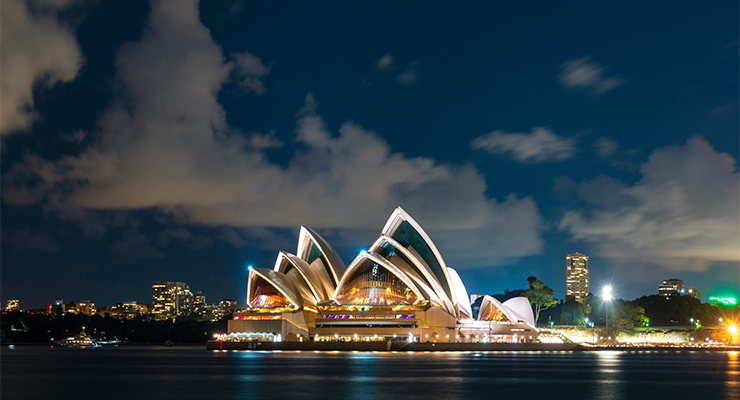
The housing market is about to cross a huge threshold: the median home in Sydney is about to drop under $1 million.
The median Sydney price was $1.009 million in December 2022, according to CoreLogic’s data. Sydney home prices are falling fast, at about 1.4% per month, or about $500 a day. That means the median home should drop under $1 million in about two weeks’ time.
The million-dollar mark is a big psychological level. The median home price first rose above $1 million in 2021 after the RBA slashed interest rates in 2020 and the federal government disbursed fiscal support. Now, less than two years later, prices are falling below that level. The rise above $1 million was brief indeed.
Australia-wide, the median price is $709,000, down 5.3% in 2022, and property price falls vary by capital, as the next graph shows.
Will the fall back below $1 million for the Sydney median price be brief or enduring? The answer depends on three moving parts: interest rates, migration and housing supply. The housing market is doing its part to sow the seeds of recovery by reducing supply.
The latest building approvals data shows fewer building approvals were granted in November, as property developers grow nervous. Fewer building approvals will lead to fewer new projects getting started and fewer being finished. That will eventually mean fewer new properties for sale. Combined with an expected uptick in migration in 2023, the property market could see reduced supply meeting extra demand and a stabilisation in prices.
Major banks tip the housing market’s fall to continue through at least the first part of 2023. Westpac thinks prices will fall 8% more this year, Australia-wide. That would knock the price of the median Sydney home down closer to $920,000.
“History shows corrections tend to come in three distinct phases — an initial weakening driven by rate rises; followed by a period in which rates are on hold but at high levels and a weakening economy becomes a more significant drag; and a final phase where rate cuts and stabilising economic conditions generate a recovery,” writes Westpac’s Matthew Hassan.
As of late 2022, owner-occupier borrowing remained well above its previous peak, as the next chart shows. This suggests rising interest rates were yet to fully take effect on property purchases. This level of interest rates would usually be associated with less enthusiastic borrowing. In 2017, when the previous peak was reached, rates were 1.5%. In October 2022, they were 2.6%, and now they are 3.1%.
Interest rates are tipped to peak around October 2023 at almost 4%, after which rate cuts are a chance, depending on the strength of the domestic economy.
But eventually house prices are likely to rise again. The price of everything else in the economy has been running up, and wages are rising too. In that context, land prices won’t fall forever. In the long run, the ratio of land prices to consumer goods prices and land prices to wages will probably continue to rise as established houses become rarer and apartments more usual in Australian capital cities.








Will house prices recover?
Hopefully not.
Housing, and the policies around the protected species that is the Australian property industry, are the greatest drivers of inequality in the nation.
From immigration to taxation the pernicious influence of the real estate industry trample the social and political landscape.
Ignore the mooing from government and even the Greens about the issue: mass immigration will always push prices higher.
We can’t outbuild population growth of 400-500 thousand annually and no-one calling the shots gives a damn.
Interesting opinions, but have you any credible analysis to support e.g. what is your definition of ‘mass immigration’?
Most of our beloved politicians enjoy the fruits of negatively geared property portfolios so expect any policy help to increase prices and deliver even more of that asset class growth. When leaving parliament, our beloved politicians can’t be expected to just live off favourable legislation directorships, gold class pensions & secret Cayman deposits, alone.
Only the outer fringes of Melbourne are significantly under a million . One million is common as.
If house prices “recovered” then the national median would be more like $300k, reflective of a sensible multiple of the median wage.
What house prices are doing now is briefly retracing the last year or two of a decades-long, catastrophic upwards spiral, before probably resuming course.
As a wannabe economic rationalist, I always look (in vain) to unbundle “house prices” into objective and subjective (“crypto”) measures. The only objective measures are the likely cost of (a) rebuilding the dwelling you see in front of you (varies quite a bit over time for real world reasons) and (b) the cost of an undeveloped block of comparable size if you can find one. The total of those two falls below the realisable “house price” because of (c) the location premium (e.g. Lane Cove vs Tallawong and (d) untethered government-induced magical thinking. The last is the major driver of wealth for people earning less than Rinehart and it’s as material as it is volatile. Nothing for rationalists here, then.
I had to look up where Tallawong is, but the fact that a tiny 500m^2 block of land there costs the better part of a million bucks should give you a meaty target to aim your “economic rationalism” at.